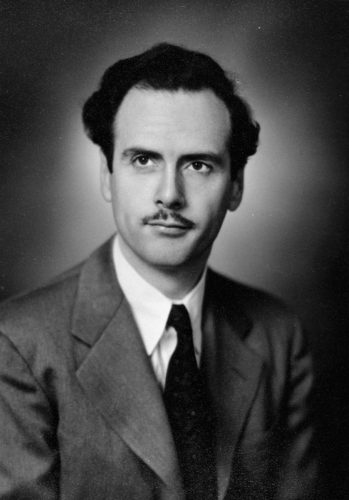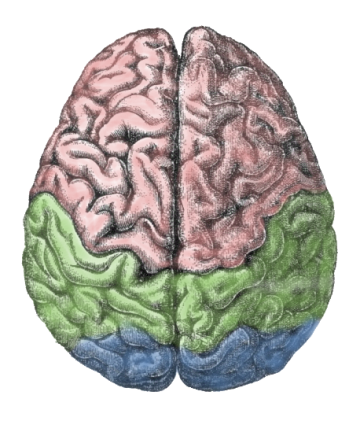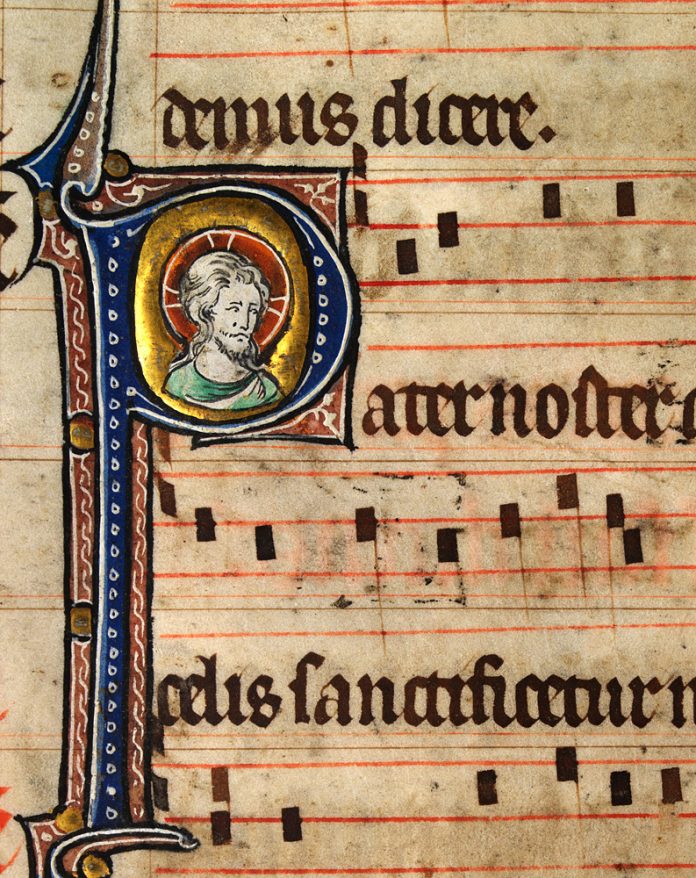‘Critical Race Theory’ is all the rage, so it is not much surprise that the historiographical device currently in vogue is the notion of ‘race’, and it has now targeted such harmless domains as music theory. In 2019 a City of New York University professor of music, Philip Ewell, spoke on “Music Theory’s White Racial Frame,”[1] which was translated into a documentary by popular music theory YouTuber Adam Neely in 2020.[2] The essential claim of these two is that contemporary academic music theory participates in the propagation of ‘racism’, and this for two reasons: its development aligns historically with a period wherein racial discrimination took place, and its architect, Heinrich Schenker, had Nazi sympathies. Other than these two tenuous pieces of evidence, music theory’s link with racism is left unsubstantiated, mainly relying on the current racial narrative to fill in the gaps. The documentary has had over a million views as of February 2021.
This is one instance of many where a popular conception, no matter how irrational, prevails over even the most rational counter-narrative: such tenets as feminism, homosexuality, the environment, and psychoanalysis have dominated the Western intellectual landscape for almost three quarters of a century. The informed Catholic mind immediately scoffs at these sentiments, whose rational justifications number fewer than can be counted on one’s fingers, yet young minds are slipping into these delusions at such a rate that a “crisis in Christianity” goes without saying. Attempts to appeal to human rationality have been mildly successful in counteracting this decline; still, fascination with Nietzsche or Marx far exceeds interest in Aquinas or Bonaventure, and the Catholic student wonders in facing this situation whether human reason can change anything at all. In reality, something deeper is happening, and we will now attempt to elucidate its nature.

First, a distinction must be made in the way we think and reason. Marshall McLuhan, a brilliant Catholic intellectual of the twentieth century, frequently employed the neuroscientific division between the right hemisphere and left hemisphere of the brain. To briefly explain, the right brain deals with wholes, unities, and forms; this side judges the arts. The left brain deals with parts, rational sequences, and analysis; this side judges the sciences. This distinction is not exclusive, though; one can apprehend the same thing through either lens – or hemisphere. With a piece of music, for example, one uses his right hemisphere to admire the inexplicable beauty of it, and to ponder the abstract, otherworldly forms that the music might conjure; he uses his left hemisphere to analyze how the notes follow each other, perhaps in mathematical sequence or using some other law of music theory, to demonstrate how it elicits such euphoria. The same can be done in a scientific domain: one uses his left brain to calculate how far away a distant planet lies; he uses his right brain to admire the vastness and mystery of the seemingly infinite universe. Both are good and useful parts of us, but they may fall out of balance.
The left hemisphere, as McLuhan argues in The Medium and the Light, has dominated our civilization for the past several hundred years. Since the dawn of the printing press and the widespread literacy that followed around the 1500s, information was communicated on a visual, sequential level rather than a holistic, auditory level; this encouraged a more divided, systematic manner of thinking, which precipitated in the Scientific and Industrial Revolutions. Coincidental with this period is the Reformation, of course, whose hyper-rationalistic theologies such as Calvinism soon came to prominence. Everything was subject to analysis and scientific probing, which removed unity from not only created things, but divine things; the philosophers throughout this period either did away with the idea of God, or attempted to repackage tradition in modern terms, proving vain and unconvincing.
Academia proceeded in this manner until the Romantics of the late 1800s, and, more importantly, the new technology of the 1900s: this is the second turning point. Radios, phonographs, and cars came into popular use, once again making everything immediate and non-sequential, whether by the auditory communication of the radio, or by the speedy transportation of cars that nullified the temporal filter of space. This means we are now re-entering the age of the right hemisphere, says McLuhan, and its fruitions can be seen everywhere: the sixties and beyond saw the eruption of monism in various forms, whether through psychedelics, rock and roll, or New Age spirituality; Vatican II itself was an attempt to respond to this new holistic worldview. All this is McLuhan’s personal insight, left for us to ponder after his death in 1980. To us in the twenty-first century, these aforementioned movements are simply fads that have come and gone; the situation seems quite different in the present day.

What is this current situation, exactly – which side of the brain predominates now? The most obvious answer is that we are seeing a mixture of both sides, just as information comes to us in similar proportion through both left-brain media (books, social media, news articles) and right-brain media (audiobooks, podcasts, and music). Playing upon stereotypes, we see irrationality visible at both ends of the conservative/liberal spectrum; they both attempt to superimpose their right-hemispherical, holistic worldview over left-hemispherical, scientific facts. No matter whether one extreme or the other is ultimately correct, the vast majority of people occupy the political centre, where left-hemisphere science is still venerated as truth. Scientific academia, therefore, leads the march of “reason,” since this is where factual reality is tried and deemed valid or invalid. However, here is where attention must be most spent. We must recognize that science can only be the arbiter of a very particular level of truth, or mode of being – the other modes are unilluminated. This space becomes the devil’s playground, where he breeds irrational ideologies out of our epistemological ignorance.
To the modern person, these higher modes of being are often obscure and difficult to grasp; a hard science cannot be made of them. But a principle can be posed as a starting point in their understanding: the principle of creation. Why should God, a perfect Being Who needs nothing beyond Himself, create a world? According to Aquinas, God brings about creation in order to share His goodness, and He even allows evil so that a greater good can be brought from it. The latter point – the problem of evil – is still debated, but Augustine offers an image in response which goads the fancy into sublimity: the world is like a painting. We human souls, as parts of this creation, are only a part of this artwork; and although we can judge creation as God does by virtue of being made in His image, we are too near in this life to see everything the frame encapsulates. Thus, we are sometimes faced with a period of darkness, and although we cannot see the surrounding light when we are in the midst of this, it will eventually serve to brighten the more luminous parts of the painting. The entirety of this work will only be apprehended in the next life, when we are united with God and able to see ourselves as God sees us.
Tying this notion back together with current events and the right/left hemisphere distinction, we can state generally that those who over-emphasizse their right-brain thinking presume to see a greater part of this cosmic artwork than they actually do, so neglecting minor factual details. Contrarily, those who overwork their left brain tend to focus on details too extremely, to the inattention and even rejection of the bigger picture.
The Catholic, who believes in universal truth without presuming omniscience, has the fortunate capacity of synthesising these two sides, without any dissonance. God has made all things, and insofar as they exist, these are true things that tie back to the ultimate Truth, and some measure of intellectual satisfaction can be enjoyed by the Catholic at any level of being. Moreover, he may (within the limits of humility!) explain particulars in relation to the grander scheme without resorting to falsity. A Marxist will note with historical accuracy that class struggle is very real, for example, but the Catholic knows that this struggle is often not a ‘will to justice’, but an unjust ‘will to control’. A feminist will correctly remark that women have been treated differently than men, but the Catholic will respond that God has made man and woman different. These responses do not deny the truth of the Marxist or feminist claims, but rather use their truth to reinforce beliefs in other truths, such as original sin and distinct sexual roles. The entirety of creation can be understood this way, through acknowledgement of truths both lower and higher than us, and can elevate the mind to God in a way that isolated facts simply cannot.
All this serves as our background knowledge. If it proves insufficient, our exploration of music theory may clarify all the above claims. Schenkerian theory, criticized by Ewell and Neely as mentioned above, is encountered in any introductory music theory class in high school or college, any music conservatory program, and most discussions of popular music theory. Of course, it does nothing to mend the faults that we have described, but it likewise fails to point to foundational Truth. Its tenets take root in the music of Bach and Mozart, those composers most worthy of veneration. By deconstructing their styles, theory is able to demand that good music must (as one example) begin with the tonic chord, depart from it to some other chord, and then, by harmonically acceptable maneuvers, make its way back to the tonic. Of course, Bach and Mozart are nonpareil composers, and in practice, this method is undoubtedly a way of understanding music that satisfies or pleases; however, why assume it is the only one? Why must this be the sole method by which we understand music, or judge music as admirable? Schenker has no answer, but Ewell and Neely do: to uphold the white racial frame.
This is a weak explanation, of course, and far more can be done to reach a true understanding. However, music does bear an impression of incomprehensibility: it is neither representative (like visual art, film, or literature) nor functional (like architecture and other artistic crafts), yet it retains an emotive power greater than any other art.[3] Such a combination of attributes elevates the art form to the point that it is deemed sacred; to explain music seems to violate what it conveys, especially to those who feel close attachment to certain songs or pieces. However, this attitude is what gives the “racial frame” theory its power: no one can put forth a better explanation, so it remains true. Thus, we must probe into the philosophy, metaphysics, and history of music, so we may discover bits of truth that clarify not only the particular nature of music, but also illuminate a sliver of God’s beauty as reflected in His handiwork.
Beginning with a Socratic union of definition and purpose, music must be defined according to its end. The primary purpose of music is not as clear as that of, say, food; it is capable of fulfilling many ends, like catharsis, beauty, expression, impression, pleasure, or propaganda. Thus, we must appeal to the end of man, which is, obviously to Catholics, union with God.[4] This does not preclude an enjoyment of music for pleasure or catharsis, since these are legitimate and may fulfill the “useful” and “pleasurable” divisions of the good;[5] however, we keep in mind a music whose very existence serves to lift the soul to God, qualifying itself as the objectively best music. Thus, religious music serves the greatest purpose, while other forms of music may be enjoyed for inspiration or repose, insofar as they ultimately serve to bring man to God.
Further, the medial aspects of an art must be scrutinized – that is, how it is transmitted – and the proper medium of music is time. Philosophies of time are scant, although Aristotle does define time as “a measure of motion;”[6] this challenges our modern conception of time as a sequence of definite, discontinuous instances – a conception encouraged by clocks, rigid schedules, and a fixation on numbers. Instead, time is an extension with ups and downs, divisible only by the human mind. This leads into a discussion of rhythm, where we can link music with dance and routine work, according to the above definition. Two-fold rhythm, the most popular form, reflects the motions of respiration, walking, and much routine labour; this kind of rhythm is human and vulgar. Three-fold rhythm, which is called “a symbol of perfection,”[7] of course reflects the Trinity, whose temporal manifestations are detailed in St. Augustine’s De Trinitate; these are more predicated upon relationality than the two-fold, providing a more perfect reflection of God. Other forms, such as a-rhythmic or mixed-meter, may reflect the motions of a number of things, too numerous to discuss at present.
Another question is the meaning of notes themselves. Pitch, although a consistent fluctuation of air molecules that takes place necessarily over time, can be viewed not as manifestations of rhythm, but more accurately as manifestations of number. Pythagoreans, Platonists, the Church Fathers, and mediaevals unanimously viewed number and numerology as paramount in philosophy, and music has always been subcategorized under math until the modern era. To say the least, two notes must harmonize by simple numeric ratio, and the simple relation between two or more notes reinforces the necessity of relationality as a constituent for all existence, as does the Trinity. Biblical numerology may also be considered here.
Further investigation of various musical elements requires delving into particular styles and customs, especially the modes of the ancient Greeks; however, we must pause from this application of philosophy. The claims we are making may arouse suspicion, because it seems basic to us that music must be at least partially subjective, and therefore not entirely reducible to objective explanation. To this, we respond that music, like any other art, is only subjective by virtue of the manner in which it is experienced, but is ultimately no less objective than Goodness and Truth. Consider the commonality of music among peoples for most of human history; centuries gave rise to folk songs that pleased all, and the Church’s inspiration produced a category of liturgical music unsurpassed in quality for two-thousand years. With these facts, we can declare that music is in fact objective, or at least mostly objective, as it has been recognized for centuries. Consider further that this constancy was upset at a time when objective morality and truth were equally interrupted: namely, around the time of the Renaissance.
More importantly, however, music carries an inherent mystery; as mentioned above, its non-representational nature seems to evade a connection with the objective. In response, we cite the wisdom of ancient philosophers, who themselves treat music with an outlandish objectivity. Aristotle and Plato, first and foremost, saw music as a kind of “representation.”[8] Boethius posits a three-fold division of music – musica mundana, musica humana, and audible music – all of which reflect each other and the highest realities.[9] A continuity does indeed exist between speculative insight and practical sonority, and not only can traditional thought attest to this, but experimental knowledge. To judge this continuity, as well as the accuracy of our speculation, we may weigh the music’s analysis against the music’s aural quality.

Let us apply this theoretical project to Gregorian Chant. The aura of Chant, when heard and properly appreciated, may be described as “humble,” “longing,” and “pious.” The alignment with our music theory is uncanny: the solitude of male voice suggests a solitude of the human spirit on earth, being obstructed from God’s company by materiality; the multitude of these voices in unison points to a union of purpose. Such fulfills one Catholic definition of humility: “knowing one’s place and accepting it.” We are human souls, striving for spiritual unity, not presuming a place among the angels, nor despairing the future possibility of this; this sentiment, expressed so pristinely in Chant, remains the fundamental reason for Pope Pius X’s bequeathal of its “pride of place”[10] in liturgy. Moreover, the rhythm of Chant follows the words, which, according to T. S. Eliot and Pierre Hadot, have a special quality that transcends death. Philosopher Hadot notes that language guides the mind towards eternal ideas: “The Logos represents a demand for universal rationality, and presupposes a world of immutable norms, which are to the perpetual state of becoming and changing appetites characteristic of an individual, corporeal life.”[11] Additionally, Eliot’s concept of the “auditory imagination” does something similar with spoken word, describing “the feeling for syllable and rhythm … sinking to the most primitive and forgotten, returning to the origin and bringing something back, seeking the beginning and the end.”[12] This eternity is also true of the unchanging numbers, which we have previously joined with the pitches used in Chant. Thus, Chant reaches for immortality through its prayerful words, the rhythm of its speech, and its use of the mathematically-sound modes, all fulfilling its aural qualities of “longing” and “piety”. Media studies can even illuminate how the structure of a traditional Church building reflects these same sentiments: the voices emanate from the sanctuary, reverberating up and through a massive Cathedral whose architecture points up toward God, placing the listener on the edge of infinite space.[13] The vertical emptiness in the building’s grand extension contains the angelic hosts in the Great Chain, whose voices polyphony attempts to fill in, but which in Chant are meekly left void to allow the articulation of an earthly yearning, which looks forward to the heavenly chorus that is audible only after death.
Touching briefly on other styles, religious music of the East directly parallels its religious sentiment, especially by use of a drone. This is the ison of Orthodox chant, accepted as will in Indian ragas and Chinese scales: the constant undergirding note represents the unchanging and ineffable unity of Being, while the melody circling around it is the song of Becoming; it professes a spiritual unity while maintaining the self-contained humility of Chant. Polyphony and Classical music, however, presume a knowledge and power over all other things. Schenkerian analysis, which makes sense of nearly all Western music from Palestrina to Chopin, predicates musical integrity on the establishment of a tonic, the deviation from it at several levels, and then the ultimate return to the tonic. The shape smacks of an Apokatastatic sentiment which actualizes the redemption of all things; more accurately, it echoes the optimistic, humanitarian vision of John Locke, who claims a fundamental virtuousness to the human spirit, and who lives contemporaneously with the height of said music. This is also why it employs many parts; it differentiates the path and end of each individual instrument, whose various dissonant ‘evils’, willed by the composer, serve to eventually beautify a final consonance and triumph. More understanding would be required to fully deconstruct a current pop song; but to say the least, the cyclic chord structures, measured rhythms, and often banal lyrics supersede the representative element of music, instead aiming for simplification and naivety. The aspect of repetition reflects cultural phenomena of digitization, consumerism, and superficiality; measure itself, which is simply repetition of rhythm, has been accused by Chant scholar Vincent d’Indy as being “one of the most deplorable innovations which the seventeenth century, so fertile in its false theories, has bequeathed to us.”[14]
Obviously, this study has potential for fruition. Still unanswered, however, is the normative question posed too rarely in current domains of knowledge: should we sacrifice the mysterious unity of a thing for the deconstructive, rational comprehension of it? Indeed, stratifying objects for scientific purposes have annulled their formal and final causes, taken away their symbolic value, and clouded their reflective properties that point to God. On the other hand, ideology offers a greater superstructure that unifies particulars, presenting a tempting universality that is undergirded by scientific inquiry. This unification of particular knowledge is a task that must be pursued by Catholic philosophers, in the form of cultural criticism, so that sense can be made of the environment that envelops us;[15] meanwhile, the ambitions of this musical philosophy form a crucial phalanx against the ideologies, such as Ewell’s race theory, that threaten to disfigure our natural relation to truth. When, finally, proper judgement of our surroundings is rendered, all things innately point upward to God, and creation is imbued with the mystery that incites the mythological wonder characteristic of ancient times.
[1] http://philipewell.com/
[2] https://www.youtube.com/watch?v=Kr3quGh7pJA&ab_channel=AdamNeely
[3] “Sight is superior to hearing, it is less painful to be deaf than blind; nevertheless, although sight is superior to hearing, the audition of [music] is more sought after than the sight of an ordinary object.” Fr. Reginald Garrigou-Lagrange, The Three Ages of the Interior Life, Vol. 1, p. 156
[4] “[Man] is called to share, by knowledge and love, in God’s own life.” Catechism of the Catholic Church, para. 356.
[5] Aquinas, Summa Theologica, I.5.6, co.
[6] Aristotle, Physics, IV.12, 221a.1
[7] Marie Pierik, The Spirit of Gregorian Chant, p. 55
[8] Göran Sörbom, “Aristotle on Music as Representation” The Journal of Aesthetics and Art Criticism 52.1, 1994, pp. 37-46.
[9] Edith Woodcock, “The Influence of Boethius on Musical Thought,” Bulletin of the American Musicological Society 7, 1943, pp. 30-32.
[10] Institutio Generalis Missalis Romani, http://www.vatican.va/roman_curia/congregations/ccdds/documents/rc_con_ccdds_doc_20030317_ordinamento-messale_en.html, 41
[11] Pierre Hadot, Philosophy as a Way of Life, 93
[12] Marshall McLuhan, The Medium and the Light, 107
[13] McLuhan, 110
[14] Pierik, 27
[15] Marshall McLuhan once stated that media acts upon us as water upon fish; the fish never recognizes the existence of water until he leaps out of it. Likewise, we must examine those media in which we live, especially technology, so that we can understand their effects and successively make a moral judgement.


